- News
- Reviews
- Bikes
- Components
- Bar tape & grips
- Bottom brackets
- Brake & gear cables
- Brake & STI levers
- Brake pads & spares
- Brakes
- Cassettes & freewheels
- Chains
- Chainsets & chainrings
- Derailleurs - front
- Derailleurs - rear
- Forks
- Gear levers & shifters
- Groupsets
- Handlebars & extensions
- Headsets
- Hubs
- Inner tubes
- Pedals
- Quick releases & skewers
- Saddles
- Seatposts
- Stems
- Wheels
- Tyres
- Tubeless valves
- Accessories
- Accessories - misc
- Computer mounts
- Bags
- Bar ends
- Bike bags & cases
- Bottle cages
- Bottles
- Cameras
- Car racks
- Child seats
- Computers
- Glasses
- GPS units
- Helmets
- Lights - front
- Lights - rear
- Lights - sets
- Locks
- Mirrors
- Mudguards
- Racks
- Pumps & CO2 inflators
- Puncture kits
- Reflectives
- Smart watches
- Stands and racks
- Trailers
- Clothing
- Health, fitness and nutrition
- Tools and workshop
- Miscellaneous
- Buyers Guides
- Features
- Forum
- Recommends
- Podcast
BUYER'S GUIDE
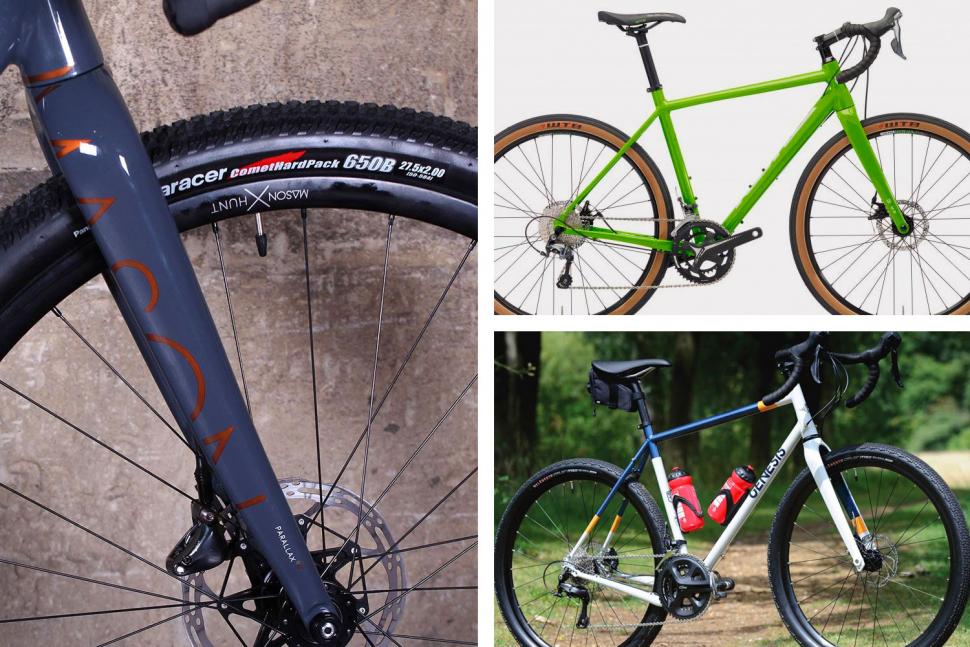 The 650B alternative October 2018
The 650B alternative October 201812 of the best bikes with 650B wheels: Is this smaller size right for you?
With fatter tyres on smaller wheels, the 650B standard gives the same rolling size as regular 700C wheels with more cushion and grip. Should you consider a bike with this reborn wheel spec?
- With a rim diameter of 584mm, 650B wheels sit between old-style 26-inch mountain bike wheels (559mm) and regular road bike 700C wheels (622mm)
- A 650B wheel with a fat tyre is about the same rolling diameter as a 700C wheel with a skinny tyre so the same frame will take both
- Bikes with fat 650B tyres are great for dirt roads and trails; a simple wheel swap and they're ready for the commute on Monday or a road club ride
Contents: the best 650B road, adventure and gravel bikes
- 12 of the best 650B bikes
- Vitus Substance CRS-2 2021 — £1,999.99
- Bombtrack Hook EXT C 2021 — £2,769
- Cannondale Topstone Carbon Lefty 1 2021 — £7,500
- Ribble Gravel AL Sport 650B — £1,599.00
- Whyte Glencoe v3 — £1,598.99
- Merida Silex+ 6000 2021 — £2,700
- Cotic Escapade — from £1,899
- Open WI.DE — £3,100 (frameset only)
- Genesis Fugio — £1,699.99 - £2,999.99
- Kona Rove 2022 — £899-£2,499
- Ibis Hakka MX — from £3,599
- Mason Bokeh — from £2,795
- Everything you need to know about 650B wheels
12 of the best 650B bikes
Vitus Substance CRS-2 2021 — £1,999.99
Vitus says its Substance CRS-2 adventure road bike will go wherever you point it, on whatever surface you choose – and it does exactly that. Its massive tyres let you float over pretty much any terrain you choose while helping on the comfort front, and the geometry keeps everything under control even when that surface is moving about beneath you. It doesn't stop there either, the CRS-2 also has a great frameset and impressive finishing kit for the cash.
Read our review of the Vitus Substance CRS-2
Bombtrack Hook EXT C 2021 — £2,769
Bombtrack's carbon fibre 650B Hook EXT-C is a highly capable, comfortable and great handling adventure bike if you really want to delve deep into the woods and escape the congested roads and plan an ambitious adventure into the unknown wilderness.
The Hook EXT-C displays a really fine handling balance and an exciting ride. It’s a huge bundle of fun and just encourages you to explore and get away from it all.
Read our review of the Bombtrack Hook EXT C
Find a Bombtrack dealer
Cannondale Topstone Carbon Lefty 1 2021 — £7,500
The Slate may be gone (see below), but its spirit was reborn in 2020 with the advent of Cannondale's carbon fibre Topstones with Lefty fork, exemplified here by the top-of the range version. The Slate was ahead of its time in its wheel size choice; the Topstone Carbon pushes the envelope with 30mm of rear suspension achieved with flexible stays and seatpost rather than heavy suspension pivots and shocks.
Like so many current top-of-the-range bikes, the Topstone Carbon Lefty 1 has SRAM's AXS 12-speed wireless electronic shifting, in this case controlling an X01 Eagle mountain bike rear mech across a 10-50 cassette with a single 40-tooth chainring, for a bigger gear range than most bikes with a double chainset.
Read our review of the Cannondale Topstone Carbon Lefty 1
Ribble Gravel AL Sport 650B — £1,599.00
Ribble offers its gravel contender in three materials — carbon fibre, titanium and aluminium. All three boast loads of mounting points for bags and carriers, and will take 700C or 650B wheels. Ribble specs their own Level 650B wheels in the base build for most versions.
Read more: Ribble unveils new gravel platform
Whyte Glencoe v3 — £1,598.99
Whyte's Glencoe combines an aluminium frame with 650B tyres and a very different approach to geometry to provide a supremely relaxed, comfortable and confidence-inspiring ride that excels on rough roads and fast descents. It's decently equipped for the money but it is a little on the heavy side, though that doesn't ruin its appeal.
Some bikes are easy to pigeonhole. Some are not. The new Whyte Glencoe is a case in point. Whyte pitches it primarily as a road bike, albeit one that is intended, with its big tyres and relaxed geometry, to be able to tackle the poorly surfaced roads most of us have to contend with better than a conventional road bike.
Read our review of the Whyte Glencoe v3
Find a Whyte dealer
Merida Silex+ 6000 2021 — £2,700
The Merida Silex+ 6000 is a nimble-handling gravel/adventure bike that offers plenty of versatility along with a comfortable ride courtesy of chunky 650B tyres.
The Silex+ 6000 offers quick handling, making it feel superbly controllable on demanding terrain. Quite an upright riding position helps here too. Rather than going into technical sections head first, you feel like you're sitting high, easily able to survey everything ahead of you and react accordingly.
You might have heard people describe gravel bikes as essentially rigid mountain bikes with drop bars. It's usually not particularly accurate but the Silex+ 6000 matches this description more closely than any other bike I've ridden. Some gravel bikes are great at bowling along at high speed but feel ponderous and awkward through tight twists and turns and steep descents; they'll grudgingly get involved, but they're not really into it. In contrast, the Silex+ feels ideally suited to this stuff. The more mountain bike-ish the tracks and trails you're riding, the better it feels.
Read our review of the Merida Silex+ 6000
Find a Merida dealer
Cotic Escapade — from £1,899
One of the early adopters of the whole gravel/adventure/do-it-all bikes, the Cotic Escapade has had a few upgrades since its inception a good five or six years ago. Larger tyre clearances, a new carbon fork and a tapered head tube have now upped the performance and dropped the weight, making the new model an absolute joy to ride whether on or off road.
Read our review of the Cotic Escapade
Open WI.DE — £3,100 (frameset only)
The WI.DE (Winding Detours) gravel bike from Open takes wider tyres than the company’s original UP from 2015 and is all the better for it, with supreme speed over all sorts of surfaces, infused with great handling and low weight.
Gravel bikes have been edging closer to the territory occupied by mountain bikes for a few years now, leading to many accusations they are nothing but glorified rigid mountain bikes with curly bars. The WI.DE suggests there's some truth in these accusations; it has space for up to 60mm (2.3in) tyres on 650b rims, as wide as many cross-country mountain bikes.
Our David Arthur rode the WI.DE with 57mm tyres and reports that it was nimble at low speed when swerving around trees on singletrack, while stable at higher speeds on loose gravel tracks. The steering is calm at high speeds making it a relaxing bike to ride on long distances because it’s not twitchy.
If you think the big tyres will mean a sluggish ride, think again. The WI.DE is stupendously quick over all terrain, whether it’s a road where it manages to not give out much speed to a pure road bike, or along rough gravel roads or forest tracks. The speed of the Open was its defining feature. The high stiffness of the frame delivers a sprightly uptake of speed and the low weight - 8.75kg for the pictured size medium test bike - ensures there’s no hill too steep or tough for the WI.DE to conquer.
Read our review of the Open WI.DE
Genesis Fugio — £1,699.99 - £2,999.99
The Genesis Fugio is solidly a gravel bike, with 50mm tyres. It’s almost a mountain bike with drop bars, and fits the growing trend for big tyred drop bar road bikes that can go almost anywhere. The frame is made from chromoly double butted tubing, with a full carbon fibre fork.
There are two models, Fugio 20 and Fugio 30. Both have 1 X 11 transmissions with 11-42 cassettes. The Fugio 20 in Genesis' Mjolnir chromoly has SRAM Apex components, cable-actuated disc brakes and WTB Venture TCS tyres, with a 42-tooth chainring.
The more expensive Fugio 30 is made from Reynolds 725 heat-treated tubing, which sheds a bit of weight. The Fugio 30 is hung with Shimano's new GRX 810 groupset and drops the gearing slightly with a 40-tooth chainring.
A Fugio frameset is £699.99 if you want to start from scratch and build your own.
Kona Rove 2022 — £899-£2,499
Several models of Kona's venerable Rove adventure/touring bike come with 650B wheels, though the frame will also accommodate 700C wheels. There's an aluminium-framed bike, the Rove 650 AL, and three with steel frames, including the Rove Ltd, above.
Can't live without composites? Kona's Libre carbon gravel bike continues with 650B wheels.
Ibis Hakka MX — from £3,599
The Ibis Hakka MX is a descendant of the US company’s previous Hakkalugi cyclocross bike but geared much more towards the gravel and adventure riding, rather than racing in the mud. Like most of the bikes here it will take 650B or 700C wheels, though you get the fattest tyre option with 650B: the stock Schwalbe Thunder Burt tyres are 54mm wide. It's a long way from cheap even in the base SRAM Rival 1X spec above, but you're getting a frame from one of the best-regarded carbon shops in the business.
Read our review of the Ibis Hakka MX
Mason Bokeh — from £2,795
From the detail-obsessed mind of Dom Mason comes a highly capable adventure bike with a feature-packed aluminium frame, splendid aesthetics, and handling that ensures it's as at home on the road as it is on the trail.
Read our review of the Mason Bokeh Force
Everything you need to know about 650B wheels
650B a wheel size with smaller rims than the 700C road bike standard, but larger than the 26-inch size that was the standard for mountain bikes until a few years ago. Because the rims are smaller, fitting 650B wheels into road and gravel bikes that usually take 700C wheels allows the use of fatter tyres with little or no alteration to the frame design, assuming you have disc brakes.
There used to be loads of French wheel sizes, designated by the rolling diameter of the tyre in millimetres, and a letter. The road bike standard 700C is one of these sizes; it originally had quite fat tyres that bulked things out to a rolling diameter of 700mm.
Wheel size designations are a proper omnishambles. The only way to be sure a tyre will fit a particular rim is to look at the size of the bead seat, the part of the rim where the tyre fits when inflated. Your 700C wheels have a bead seat diameter of 622mm; for 650B it's 584mm.
The 650B wheel size was popular with French touring cyclists back in the 60s, and has been brought back from the brink of extinction by the mountain bike industry. It has pretty much replaced the original mountain bike 26-inch wheels, which have a bead seat diameter of 559mm. Also referred to as 27.5in, the wheel size is now found on bikes from entry-level hardtails to downhill bikes.
But 650B is no longer just on mountain bikes. Road bike manufacturers from small independent frame builders like Hallett Handbuilt Cycles to mainstream brands like Cannondale have adopted it for all-purpose and gravel bikes.
The combination of a 650B wheel's 584mm rim and a tyre width of between 30 and 50mm gives about the same overall wheel size as a regular 700C rim and 25mm tyre, so the rolling speed and handling characteristics will be similar to a regular road bike.
- Trend spotting: Why you need to switch to wider tyres
Benefits include additional cushioning from the bigger volume of air, providing a smoother ride, and a larger contact patch which boosts traction, ideal for mixed terrain and slippery roads.
Do we need a new wheel size?
There has been a move to wider tyres on endurance and sportives bikes over the past few years, with bikes like the Cannondale Synapse and Giant Defy, which both cater for fat tyres, proving incredibly popular with cyclists that want a bit of extra comfort.
- Buyer's guide: sportive and endurance road bikes + 15 of the Best
Even professional road race cyclists, once wedded to skinny 22 and 23mm tyres, are now switching to 25mm and 26mm tyres as standard. But it's arguably cyclists seeking comfort, especially with road conditions deteriorating due to lack of maintenance, that have been pushing manufacturers to develop bikes with space for wider tyres.
The adoption of wider tyres has been swift. With many cyclists cottoning onto the benefits of wider tyres, many are seeking bikes capable of taking even wider tyres. A mere 28mm just doesn't cut it anymore. The latest crop of gravel and adventure bikes massively increase clearance over the endurance bikes, accepting tyre widths between 30 and 50mm.
- Buyer’s guide to gravel and adventure bikes plus 13 of the best
One significant benefit of 650B bikes is to do with geometry. A 42mm tyre on a 650B rim provides about the same outside diameter as a 23mm tyre on a 700C wheel, so you can fit much wider tyres to the bike without requiring any drastic changes to the geometry of the frame and fork.
A bigger tyre on a 700C rim requires changes to the frame and geometry. The chainstays need to be longer, and with it the wheelbase and the fork needs to be taller. This can impact the handling of the bike and takes it further away from the responsiveness and agility that is the hallmark of a road bike.
Why now?
Wider tyres are becoming more and more popular. Gravel and adventure bikes offer a new option for the growing number of cyclists that want a versatile bike to cover different road surfaces and terrain (and previously might have chosen a cyclocross bike) and 650B is back in fashion in the mountain bike world. All of that has made bike makers look again at a wheel size alternative.
With the mountain bike industry geared up to developing 650B bikes, there’s now a lot bigger choice of wheels. There’s also a cross-pollination of ideas and engineering, especially with the growing gravel and adventure bike sector, which owes a lot to the mountain bike world. It was really only a matter of time.
How Cannondale went 650B with the Slate
When it launched the Slate in 2015, Cannondale reckoned that a 650B rim with a 42mm tyre was the perfect pairing for a bike designed to be fast and agile on the road, like a regular road bike, but capable when the surface turns to dirt and gravel.
- Cannondale Slate - First Ride Review
“On Slate, the decision to go for 650B was natural for us,” Cannondale's David Devine says. “We knew which tyre size we wanted, 42mm. We knew which chainstay length we wanted, 405mm. When we discovered the rollout of 700x22mm and 650x42mm were roughly the same, we decided it was the best wheel size for achieving our desired tyre volume within the set geometry. Traditional 700C wheels, paired with the 42mm tyre would have driven a longer chainstay length, and would have necessitated a higher frame stack while maintaining the same 30mm Lefty Oliver Suspension fork.
“650B wheels offer our desired geometry and tyre volume together in one package, rather than having to make a compromise with smaller tyres or longer chainstays,” explains Devine.
The bespoke option
It’s not just the big players in the cycling industry that are paying attention to the benefits of 650B. Bespoke frame builders have been closer to the cutting-edge of bicycle design than many of the bigger corporations for some time, with a closer relationship to their customers and able to produce one-off frames much more quickly.
Richard Hallett of Hallett Handbuilt Cycles has been dabbling with the 650B wheel size and appears convinced of the benefits, saying that ride comfort and grip are the big advantages.
“650B road tyres such as the Grand Bois Cypres and Hetre offer demonstrable improvements over 700C tyres up to 28c in rolling resistance, ride comfort, grip, all-roads riding and, importantly, safety,” says Hallett, “so using 650B wheel and tyres I can build a touring, audax, utility or training bike that offers superior performance in these respects.
“There is a weight penalty, the amount depending on tyre size, which is why they aren't used in racing. If someone wants a racing or sportive bike, I recommend 700C, up to 25mm.”
Road.cc took a closer look at one of Richard Hallett’s bespoke bikes last year, a steel frame and fork with 650B wheels and 42mm tyres. His aim was to build a fast, comfortable and fine-handling bike and put it through its paces in the 300km Dragon Ride sportive, a stern test indeed for any road bike.
We’ve been here before haven’t we?
Sort of, yes. Using smaller mountain bike wheels on a road bike is nothing new of course. There have been many road bikes designed with 26-inch mountain bike wheels that allow clearance for larger tyres: the Surly Long Haul Trucker is one such bike that can, as well as regular 700C wheels, take a 26in rim with a tyre width up to 62mm.
While such bikes have been a quirky oddity to most regular road cyclists, the growing popularity of wider tyres on all road bikes and a shift towards comfort over outright speed, could mean we'll be seeing a lot more new bikes that take a fresh look at the advantage of combining a smaller wheel with a bigger tyres.
Was Cannondale’s Slate the start of a new trend or simply a one-off? David Devine thought at the time that we were likely to see more manufacturers take an interest. time has proved him at least somewhat correct.
“I do anticipate that other bike companies will trend toward making 650B road bikes,” said Devine. “Already, we have some tyre manufacturers approaching us to make sure they are opening moulds that will be compatible with Slate. In addition to the tyres available from Panaracer, you will see tyres from some of the main brands already coming to the market in this size. The Slate will help broaden the tyre selection for 650B x 42mm tubeless, all-road tyres. It’s something that has been around in the hand built community for some time.”
While there are clearly some very good reasons for going to a 650B bike wheel size, there are some downsides. A 42mm tyre is heavy, about 400g, about twice the weight of a regular narrow road tyre, and that extra weight at the outside of the wheel could impact acceleration and speed. Those concerns might be easily outweighed by the comfort, durability and robustness for tackling rough roads and gravel paths and off-road tracks, though. 650B could make sense to a lot of cyclists.
Perhaps the mainstream bike brands won’t have it all to themselves, argued Richard Hallett.
“The large-scale manufacturers seem to have put all their eggs in the 700C wheel basket so we see everything from race and sportive bikes on 700Cx23/25 to gravel and adventure bikes with 700Cx32/35 tyres,” he said. “These are inevitably heavier than 650Bx32 with no appreciable performance advantage, but investment in 650B would cost money, so I suspect 650B road bikes will remain a small part of the market for the moment.”
The latest 650B bikes
Three years later, it looks like Hallett was more or less right: The biggest brands, Trek, Specialized and Giant have all stuck with 700C. But a few more manufacturers have taken the plunge and added a 650B bike to their ranges. Canadian brands Kona and Norco both have gravel bikes with 650B wheels, as do the UK's Genesis, Chain Reaction Cycles house brand Vitus and boutique marque Mason Cycles.
As for the Slate, it was perhaps too far ahead of its time and was quietly discontinued, replaced by the mostly-700C Topstone range. But you can't keep a good idea down for long.
About road.cc Buyer's Guides
The aim of road.cc buyer's guides is to give you the most, authoritative, objective and up-to-date buying advice. We continuously update and republish our guides, checking prices, availability and looking for the best deals.
Our guides include links to websites where you can buy the featured products. Like most sites we make a small amount of money if you buy something after clicking on one of those links. We want you to be happy with what you buy, so we only include a product if we think it's one of the best of its kind.
As far as possible that means recommending equipment that we have actually reviewed, but we also include products that are popular, highly-regarded benchmarks in their categories.
Here's some more information on how road.cc makes money.
You can also find further guides on our sister sites off.road.cc and ebiketips.
road.cc buyer's guides are maintained by the road.cc tech team. Email us with comments, corrections or queries.
David worked on the road.cc tech team from 2012-2020. Previously he was editor of Bikemagic.com and before that staff writer at RCUK. He's a seasoned cyclist of all disciplines, from road to mountain biking, touring to cyclo-cross, he only wishes he had time to ride them all. He's mildly competitive, though he'll never admit it, and is a frequent road racer but is too lazy to do really well. He currently resides in the Cotswolds, and you can now find him over on his own YouTube channel David Arthur - Just Ride Bikes.
Latest Comments
- Rendel Harris 1 hour 9 min ago
Not every freehub makes a noise, especially older ones manufactured before sounding like a Maxim gun apparently became a badge of honour.
- ubercurmudgeon 1 hour 39 min ago
Some quotes need to be put around the word "reciprocal" in the first paragraph.
- David9694 2 hours 15 min ago
this one is wide open for puns, come on people.
- BikingBud 2 hours 16 min ago
Do you mean this woman, who got out to marshall the truck through and is now walking back to said Wankpanzer which is blocking the road again as it...
- mark1a 2 hours 31 min ago
This simply isn't true. I've been running radar lights for 10 years now. I cycle mostly on rural roads, I get notified of approaching vehicles up...
- Rendel Harris 5 hours 1 min ago
Genuinely puzzled as to how you've extrapolated that from what I said. Care to explain?
- Pub bike 44 min 19 sec ago
He is up against the global trading system, which has obviously been in the news a lot lately. Framebuilders in other countries can undercut him,...
- Destroyer666 20 hours 35 min ago
Have you owned Bont shoes? In my experience even the widest Lake shoes have had a bizarre form of narrowing way too much in the toe area. But the...
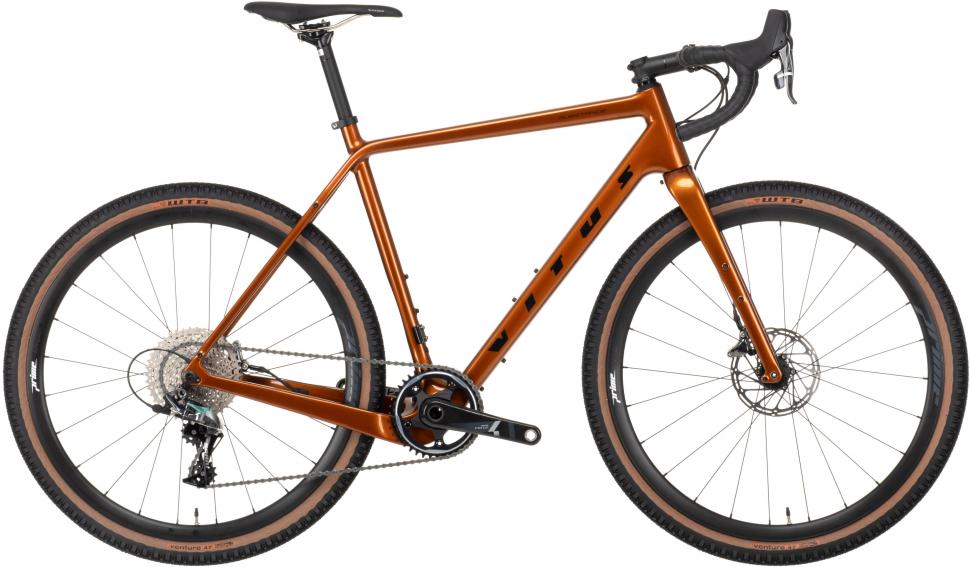
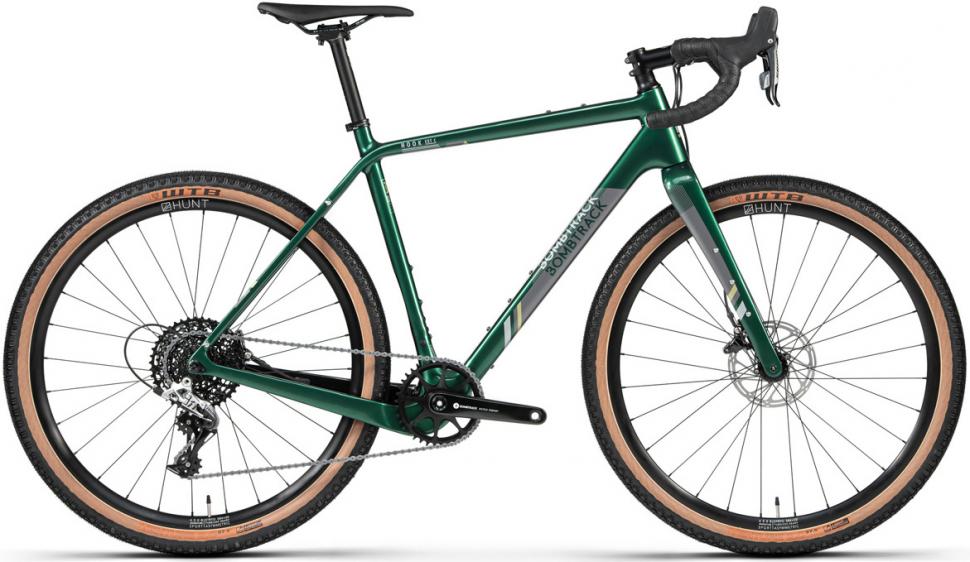
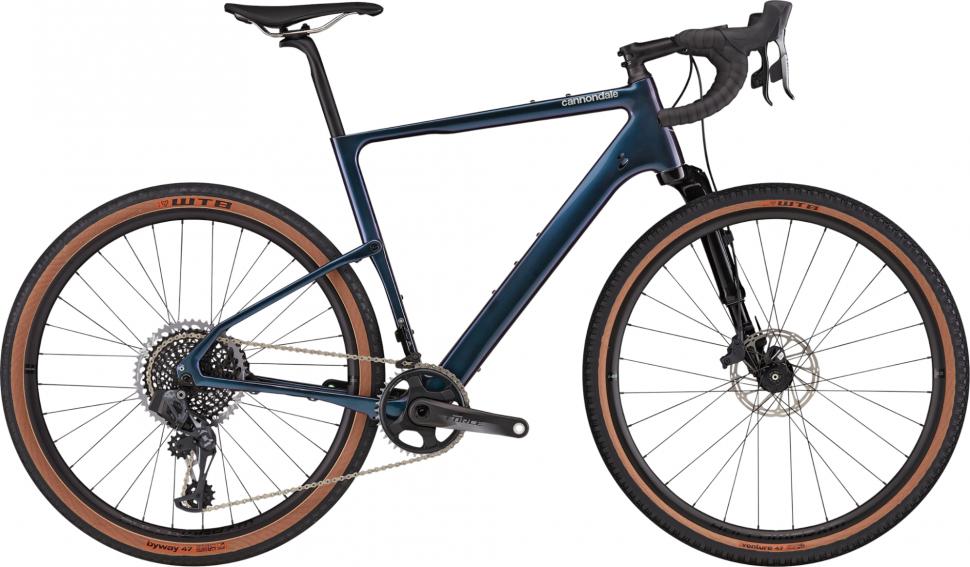
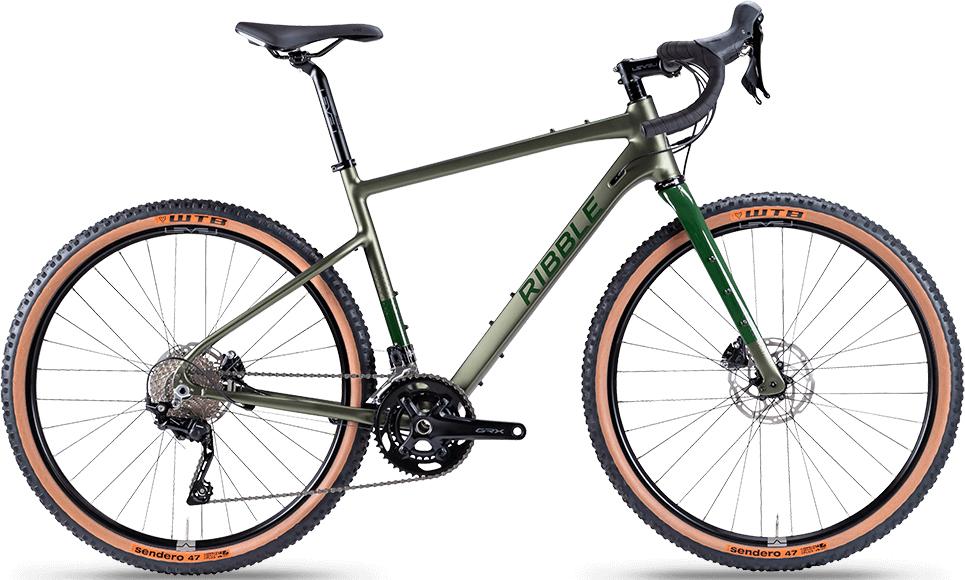


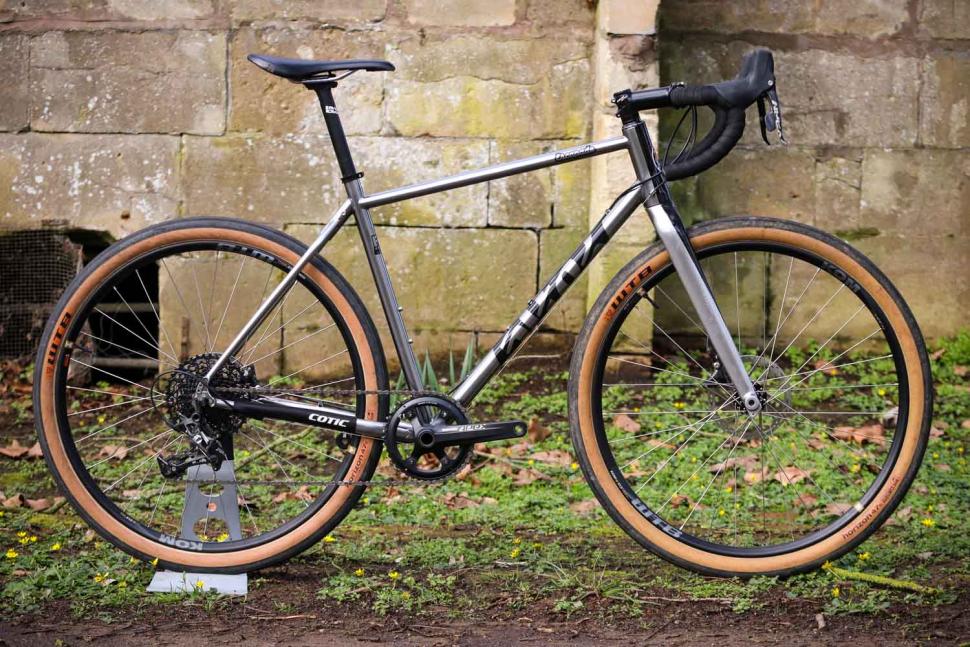
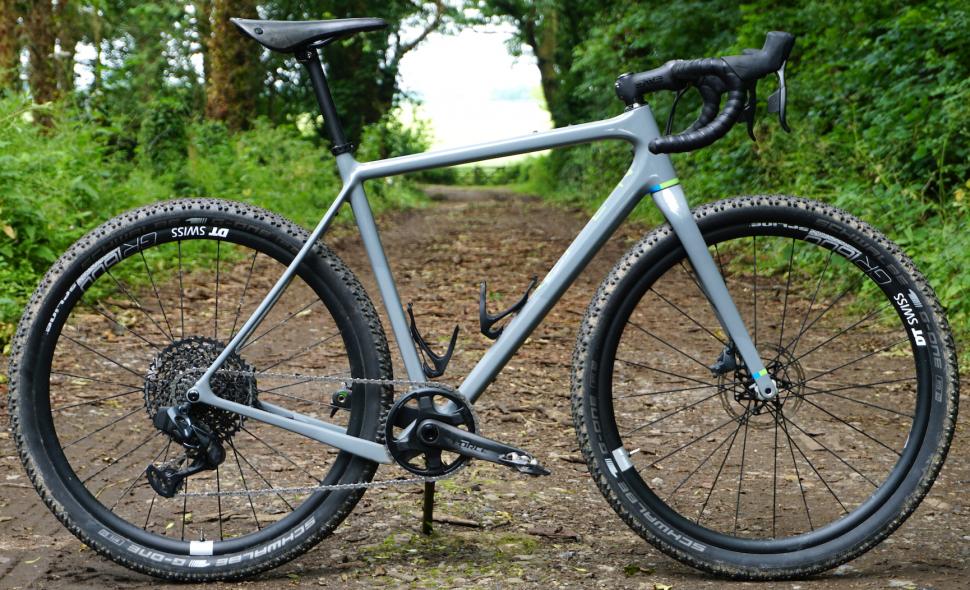
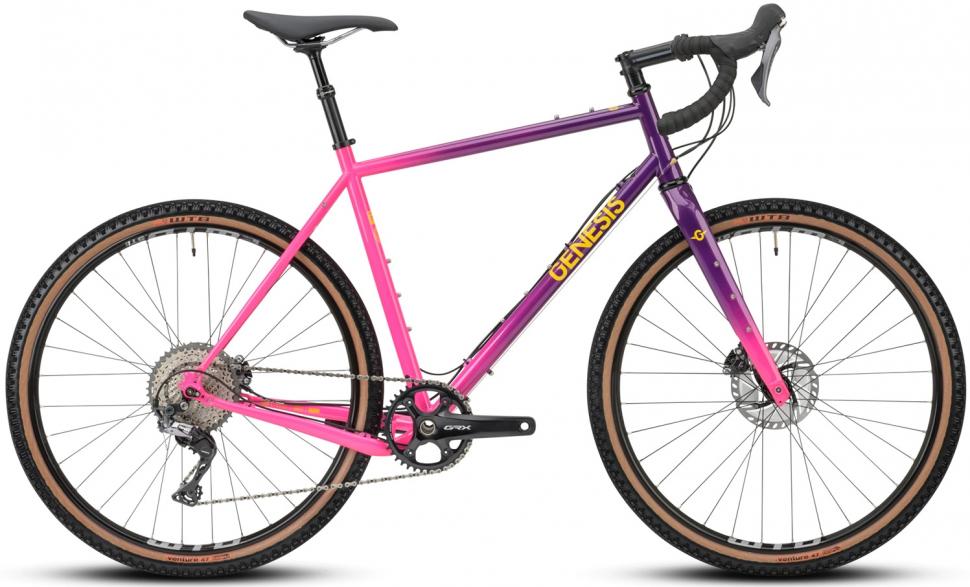
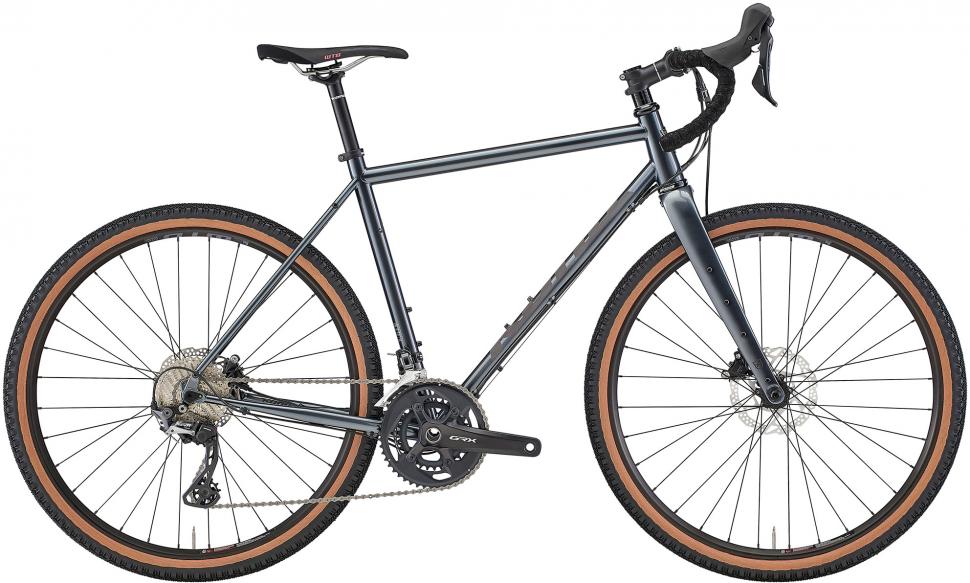

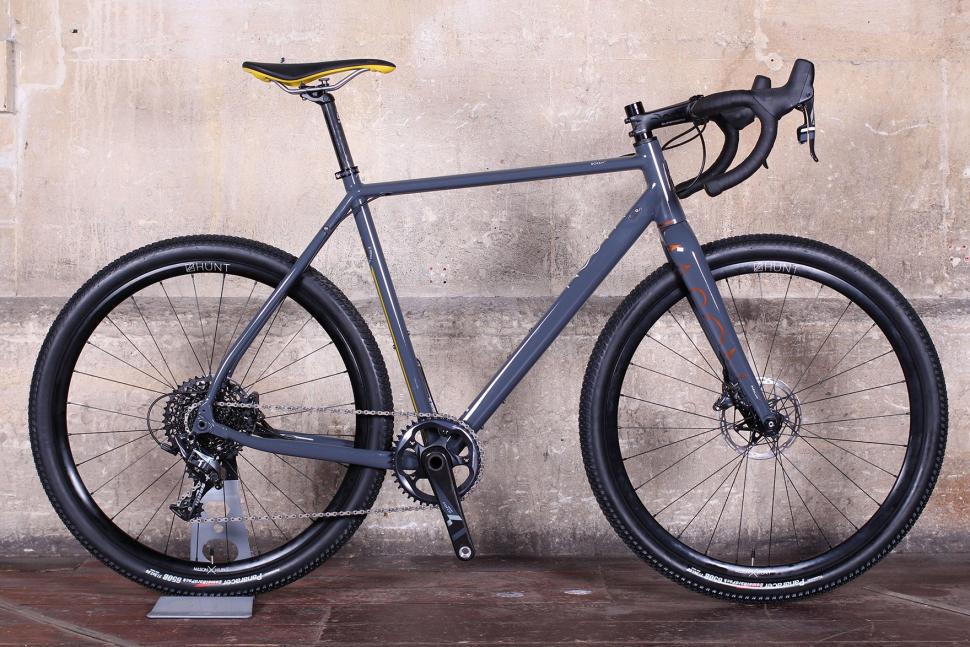

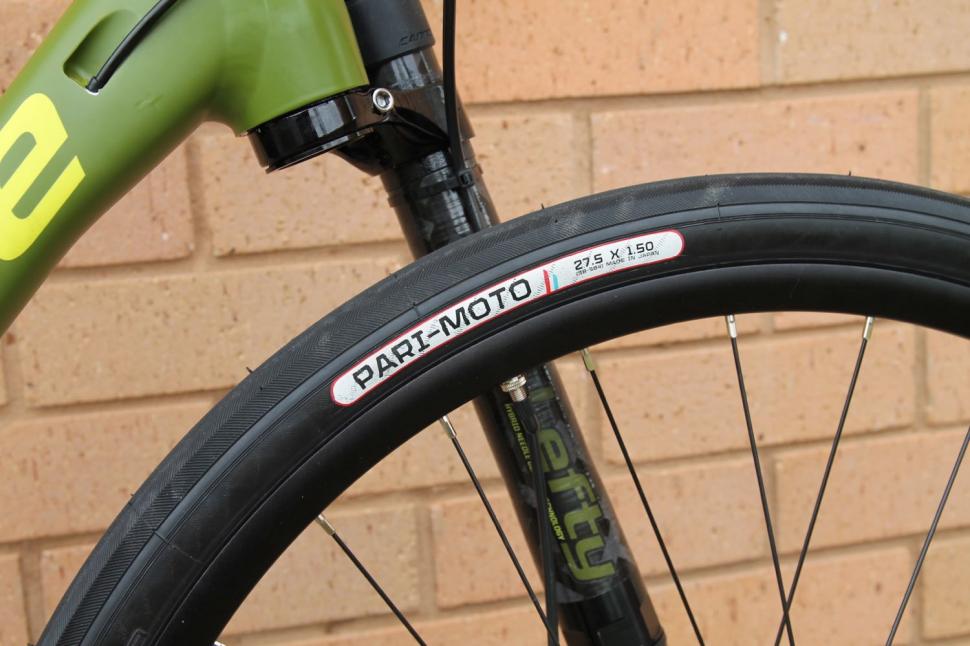
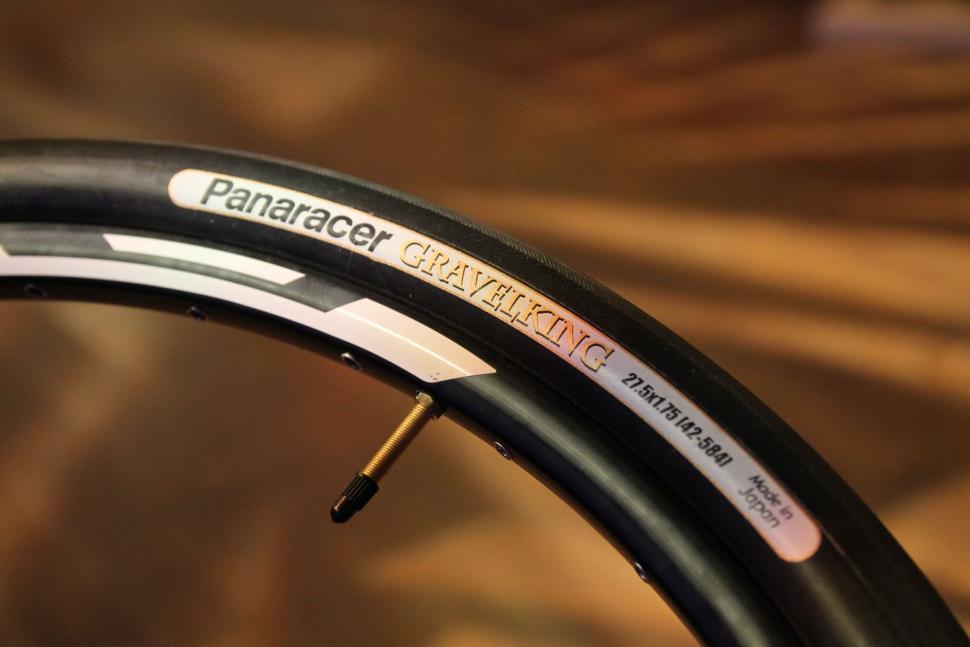

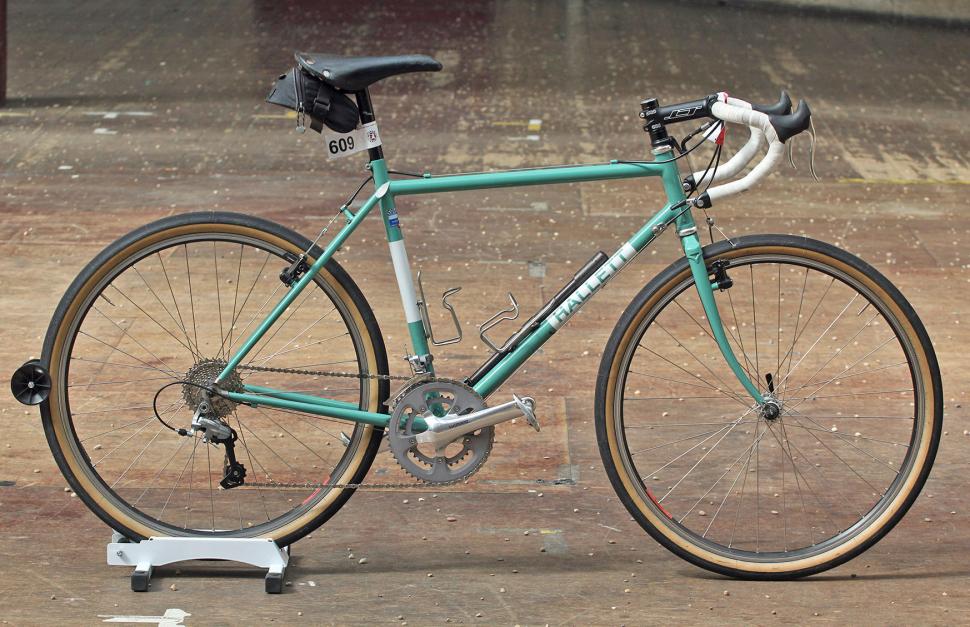
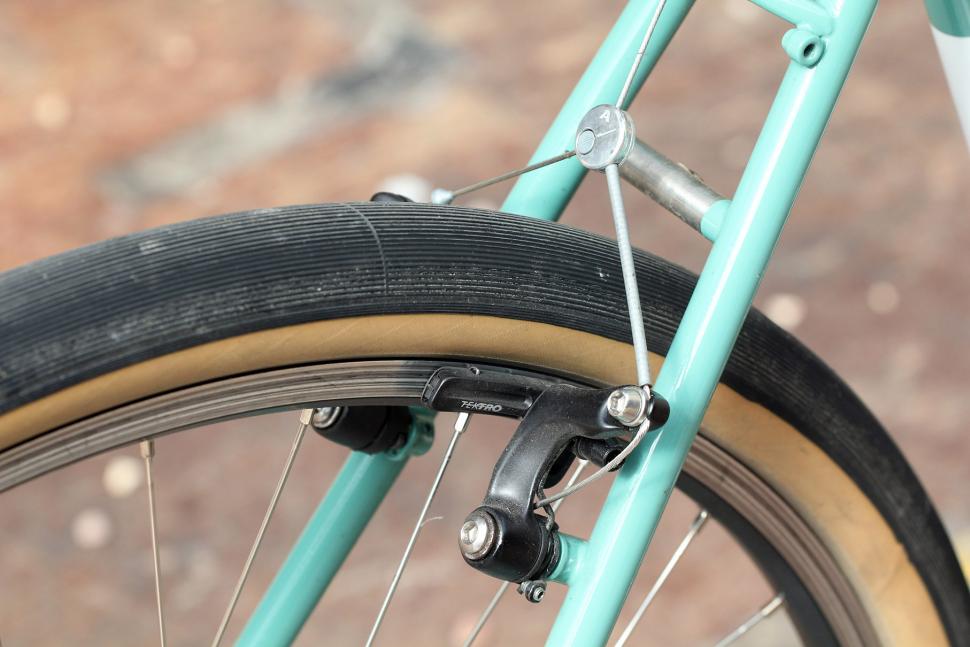
Add new comment
14 comments
Assuming I have a disc brake 700c bike, what are the limiting factors preventing me downsizing the wheels to 650b? Presumably if I wanted to keep the same tyre width, there are no limiting factors, the problem is just whether the seatstay and chainstay spacing and chainstay length allows for fitment of the bigger tyres which are the main benefit of 650b? E.g. I'm a bit confused that the Genesis Croix de Fer is billed as 700c only (max 38c) whereas the Fugio will only take a slightly bigger 700 x 40c, but is also rated for a 650b x 60c.
I find that puzzling too. I really can't see anything preventing you putting in the smaller wheel as long as you observe the maximum tyre width allowed by the design of chainstays, seatstays and front fork.
I was amazed just how much difference it makes on my Faran. I've gone from 33mm 700c wheel/tyre/mudguard combo to a whopping 47mm/650B - and I can still fit full-length traditional mudguards with room to spare. Perhaps not surprising given it's a touring tyre size but running a bike designed for 700c on 650B has to be the ultimate commuter, particularly on a slick like a WTB Horizon or similar.
The good point that was made about a 650b wheel lowering the effective bottom bracket height, have you noticed that in any way?
I ride a Whyte Glencoe which has 650b tyres in their cyclocross frame (I believe) which usually runs 700cc tyres. The BB height is meant to be the same but I do get pedal strike in some corners which makes things a bit exciting...
Looking at Whyte's measurements the Glencoe v2 drops the BB even closer to the ground
@Crashboy - I know Decathlon used to supply the XS frames in the Triban range with 650B tyres and I think a few other manufacturers do to. It means that you can still have something with race geo.
Two things always spring to my mind about this topic:
1 - If the UK's roads weren't so terribly surfaced you wouldn't need such a cushy tyre...obviously off road you want the tread etc, but still...
2 - In my opinion - and I've only tried a few so I'll admit that I may not be the most informed - wheels size should be different with teh different frame sizes: why would we even expect 2 bike frames that are 15 or more cm different in size(one for a person who is 5'5 and the other for someone 6'4 for example) to take the same size wheels anyway? My experience is that many Small frames with big wheels look silly, handle badly and give you problems with toe overlap, fitting mudguards and panniers etc. because the angles etc are all over the place to squeeze the wheels in! Just look at some of the small MTBs with 29er wheels: they have a rediculously sloped top tube that looks like a step through frame from 1985 just so the riders can clear the top tube: that's got to affact the handling and ride quality surely?
With smaller wheels the proportions could be fixed and smaller riders could have cooler looking bikes!
Shorties Unite - we want standover clearance and we want it now!
(Just waiting for 26" to make a comeback in the MTB world, - it's going to come- then my old bike will become an instant classic rather than being accused of being a child's bike by any bike shop employee under the age of 30)
Yebbut different wheel sizes affect the gearing.
Fair enough: I don't know enough about "gear inches" etc, but couldn't that be compensated for to some degree with a different cassette / chainring etc? On a smaller bike, you probably need different crank lengths too...?
Having too many different wheel sizes in circulation is a nightmare, but it absolutely would make sense for very small frames to use a smaller wheel size. This is done, rarely, but usually they use standard 700c wheels and make compromises on the geometry instead.
Wheels in circulation. That has a ring to it!
I've gone 650B on my gravel/tourer. Won't be going back to 700c in a hurry. I got some seriously good wheels for not much money (£150 for a tubeless wheelset fully convertible to whatever axle standard I want to use, so completely future-proof) and WTB Sendero tyres. Tyres like that I would say are a big factor in going 650B - it means I can take what's essentially a road bike through deep sand and mud with no issues. Plus I just blast through whatever the trail or road throws at me because of the huge air cushion and low pressures. Don't feel draggy on tarmac either.
Something you should bear in mind if you're going for this is that whilst the tyres are heavier obviously a physically smaller 650B wheelset is going to be lighter. Wouldn't be surprised to see a manufacturer come out with an ultra-lightweight wheelset. Hunt's 650B carbon wheelset is already around 1400g - I'd imagine it would be possible to trim a fair bit off that with lighter hubs and less spokes. Not entirely sure what the point would be but low weight = £££
My missus has an XS Canyon Endurace - so a pure road bike - with 650B wheels. She is not actually that small (about 5'4" I guess) but Canyon road bikes come up pretty large.
She really likes the bike and i think having smaller wheels contributes to that, giving a more nimble feel. The main downside is the availability of 650B pure road tyres... whilst Schwalbe Pro One and Continental GP5000 are available in 650B, it's not so easy to actually get hold of them when you need them.
Out and out speed on flatter sections is also compromised but she prefers climbing and there is certainly some pay back from smaller wheels as the gradient starts to kick up.
I'm the same height and most brands' size Small is too big for me.
There is the perennial problem of toe overlap with 700c, even with skinny tyres, which is sometimes noted in reviews but as they invariably test larger sizes they aren't preoccupied with this significant issue.
"A 42mm tyre is heavy, about 400g, about twice the weight of a regular narrow road tyre"
A 400g tyre really isn't a big deal. While it's twice the weight of a lightweight 'summer' or race type tyre, folding variants of general purpose road tyres such as Durano or Krylion in 25mm are around 250g (and ~100g more for wired). If you're wanting comfort and better grip on rough roads and/or the ability to ride on mixed surfaces those 25mm tyres simply won't cut the mustard.